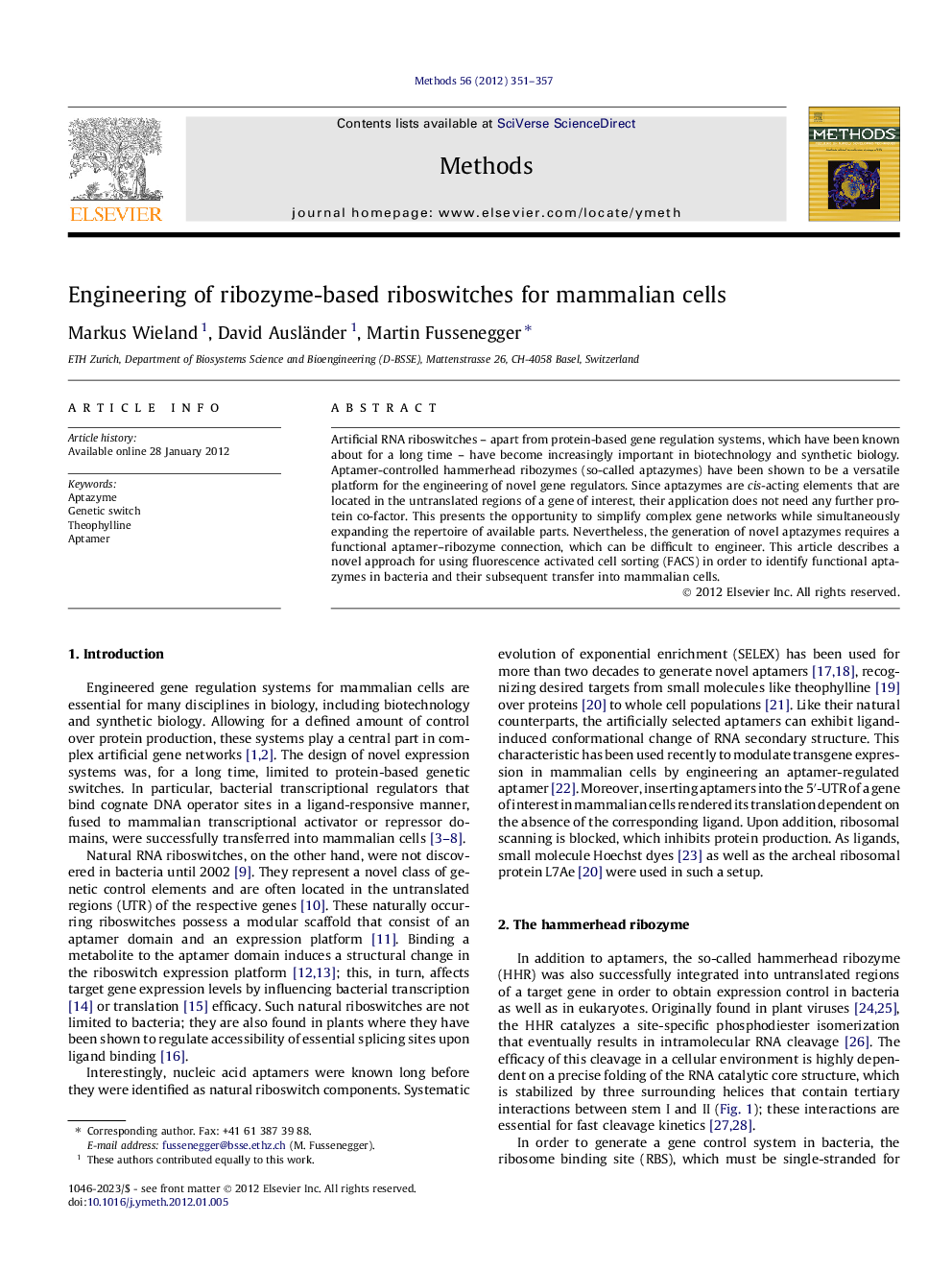| Article ID | Journal | Published Year | Pages | File Type |
|---|---|---|---|---|
| 1993662 | Methods | 2012 | 7 Pages |
Artificial RNA riboswitches – apart from protein-based gene regulation systems, which have been known about for a long time – have become increasingly important in biotechnology and synthetic biology. Aptamer-controlled hammerhead ribozymes (so-called aptazymes) have been shown to be a versatile platform for the engineering of novel gene regulators. Since aptazymes are cis-acting elements that are located in the untranslated regions of a gene of interest, their application does not need any further protein co-factor. This presents the opportunity to simplify complex gene networks while simultaneously expanding the repertoire of available parts. Nevertheless, the generation of novel aptazymes requires a functional aptamer–ribozyme connection, which can be difficult to engineer. This article describes a novel approach for using fluorescence activated cell sorting (FACS) in order to identify functional aptazymes in bacteria and their subsequent transfer into mammalian cells.
Graphical abstractFigure optionsDownload full-size imageDownload as PowerPoint slideHighlights► Description of a novel theophylline-responsive aptazyme. ► FACS-mediated screening for functional variants in bacteria. ► Introduction of aptazymes into mammalian cells.
